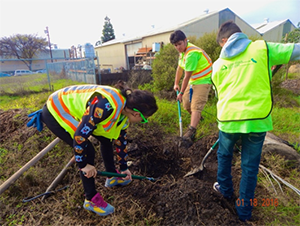Post From Expert Insights
When it comes to the range of social benefits that we can receive from urban green spaces—common areas where people can recreate, volunteer, and connect with others in their city—our understanding continues to unfold. While social isolation can be considered a growing epidemic in the United States, social disconnection may be a root cause of depression and diminished quality of life.
An important antidote to this lack of connection may lie in where we choose to spend time outside of home, school, or work – specifically, in green spaces such as parks, gardens, and trails. An increasing body of evidence shows that the time people spend in urban green spaces promotes human connection, thereby enriching how we perceive the value of these spaces and each other. A new article in the International Journal of Environmental Research and Public Health, the first-known synthesis of scientific knowledge on the impacts of urban green space on social cohesion and health, provides a ”big picture” perspective on the social benefits that we may receive from urban green spaces.
“Urban green spaces may provide key social benefits, including promoting a sense of community, belonging, social engagement, empowerment, and social support,” said lead author Dr. Viniece Jennings, a researcher focused on the influence of urban green spaces on various aspects of human health and well-being. “However, certain factors, such as the quality of a given green space, the type of social engagement programs offered in that space, and surrounding social conditions, may influence those outcomes in both positive and negative ways.”
More organizations across the country are focusing on green spaces. As the article notes, urban green spaces are tied into the fabric that influence the social determinants of health.
Realizing the potential benefits of urban green spaces fuels the work of organizations such as Groundwork USA. A national network of community-based organizations that enhances the built environment in cities and underserved neighborhoods, Groundwork USA recognizes that low-income communities and communities of color often lack access to high-quality green spaces. In a recently released impact evaluation of its “Green Space Action” model, Groundwork USA shared several video and narrative stories of ordinary people coming together to bring about extraordinary place-based transformations in their communities.

Volunteers at Groundworks Richmond are
planting greenery in their community.
For example, the origin and subsequent development of Unity Park in Richmond, California illustrates how neighbors helped design and construct a vibrant green space for people to play and travel by foot or bike. In doing so, local stakeholders reclaimed an underutilized, contaminated corridor in their neighborhood, strengthening connections with and between neighbors in the process.
The stories are rich and engaging. They provide inspiration for people who desire to create positive change in their neighborhood, foster a greater sense of community, and make connections with their fellow neighbors. Together, these stories demonstrate how an individual’s Groundwork journey often begins with a personal connection to or experience in an urban green space. Their experience unfolds by meeting like-minded residents to steward that space and deepens with ongoing contributions of time and energy that further enhance other spaces in their neighborhood. As an added bonus, much of this activity can help weave together and reinforce the civic fabric of their community.
These projects illustrate how green spaces encourage civic engagement, promote positive social connections, and minimize isolation in ways that support the pursuit of health equity, the opportunity for all people to achieve optimal health. For example, an improved social environment may relate to access to material resources, social capital and other facets of equitable community development. Together, these efforts can catalyze people to help build the places they call home, positively connect with others, and possibly change the narrative for themselves, their city, and their collective future.